Behind The Scenes of The Artist's Mind: The Creative Lives and Mental Health of Famous Artists
Guest posts, author interviews, excerpts, previously unpublished sections and more ...
I had so much fun throughout the month taking my book, The Artist’s Mind, on a virtual book tour. I loved getting the chance to share some behind-the-scenes stuff about the book including parts that got edited out but are still so good. I loved thinking about the smart questions that interviewers asked me. And I loved interviewing some of them back about their own work because this book is really just the starting point of an ongoing conversation I want to have about the complex relationship between art and mental health. In case you missed anything, here’s the roundup of all that happened on this tour.
PLEASE HELP ME MEET MY GOAL:
My goal is to find 1000 people who are interested in subscribing to this work at a rate of $100 per year. This shows the world that we as creatives believe artists and writers can and should earn six figures. I practice artistic tithing, meaning that at least 10% of my income automatically goes to support other artists, writers, makers, creatives, performers, etc. So if I meet my goal, we keep at least $10000 of that right in the creative community. I also make every effort to continuously encourage, support, share and promote the work of others.
$100 per year feels like a lot. But it works out to less than $2 per week.
If this is something that you believe in, I really need the support of paid subscriptions to be able to keep doing this work that I’m deeply committed to. In fact, I believe in this work so much that I’ve self-funded a year of full-time work here using a business loan. If I don’t reach the above goal by Summer 2024, I may have to revisit things.
Book Reviews
A few people were amazing and supportive enough to share reviews of the book, and I am endlessly grateful.
I Have Thoughts Review
of said:“Vercillo knits together the artists’ stories with intricate, deeply profound knowledge about the mental health issues in discussion without feeling sterile or like reading a textbook.”
and also this, which meant a lot to me, because this book is just the starting point to a conversation I intend to keep having:
“In The Artist’s Mind, I find myself asking questions about myself in relation to the person I was reading about. What sort of compassion might I have had for this artist? Would I have understood their work? Would I have been able to fully appreciate their story had I known them in real time? I connected to certain artists, finding lines between events in their lives and events in my own life. It allowed me to consider the way my creativity has unfolded and continues to unfold. I have not answered the question of whether mental health leads to creativity, or if it heals or hinders. But, Vercillo makes it plain that is not the point.”
Thanks again to Sam who “shares personal essays and vignettes about the human experience as she experiences them herself, as well as themes of mental health, faith, and the people of her life.” I have had the opportunity to interview her about this work:
Art and Mental Health Interview with Writer Samantha Rose McRae
Mental health to me is how one is able to experience everyday life. We all have days when we feel overwhelmed or unfulfilled, but when we begin to have chronic experiences that prevent us from experiencing life overall in a healthy or positive way, we may consider we are struggling with mental health. Be it depression or anxiety or something more akin to bi-polar disorder or schizophrenia, we experience life uniquely based on how our brains are wired. If there is some way to show up everyday in a way that makes us feel stronger and healthier (such as medication, therapy, full-time care, etc), we all deserve to have access to that care without it being stigmatized.
Chapter Review at The Bite of The Sun
Thanks to
for reading and reviewing the Yayoi Kusama chapter of the book.“Kathryn approaches her subject with a gentle, generous, and validating curiosity, inviting her reader to follow suit. Kathryn’s latest book, The Artist’s Mind, showcases the relationship between artists and their mental health struggles, including the psychosocial dimension of their unique experience, thinking about whether art helped or hindered -or perhaps both- their well-being.”
Thanks again Mya! Mya is a “poet, writer and apprentice creator of monochrome portraits” whose bi-monthly newsletter is all about “showcasing art in its myriad forms as it fuels joy, connection and further creation.”
Book Review at Bird’s Eye View
shared the experience of reading the book as someone with BPD working through his own understanding of if/how this relates to his creativity. This is exactly the conversation I want to spark with the book; I don’t have the answers but I’m trying to provide as much information as possible to generate the questions.“The objective of the book isn’t to speculate or provide an armchair diagnosis on famous artists, but to explore their story and what we know about their relationship to mental health to consider whether their disorders and/or illnesses helped or hindered their work.
This approach provides a landscape for rich exploration. In the book, I gravitated immediately to the chapter of some of my favourite artists who I was familiar with to read her analysis.”
Thanks again Bryce for recognizing this about my work and for sharing your own experiences in the review. It means a lot to me to continue this conversation.
Book Review at RUINS
As
says: “this post is partly a review and partly a rumination on some themes the book brings forward—themes of how the careers of artists overlap with their personal lives, how society as a whole talks about artists, and how artists explain their own experiences.”“The overall impression I get from this book is that the mental health history of various artists is a very personal and private matter; it cannot be used to prop up some theory of art, madness, or creativity—and we should not use it as a shortcut to careful understanding of each artist’s unique vision and creative output. “There is a fine line between genius and madness” is, ultimately, not a helpful way to approach the issue.”
Thanks again to William, who also did a comprehensive interview with me, which you can find below …
Author Interviews
I love the chance to answer interview questions because they get me thinking about the work in fresh, new ways. Plus, I love the conversations that ensue.
Changing Lives Interview
and I discussed why I wanted to write this book, how I chose the artists that are included, the sources used to research, what I learned that surprised me, and how writing the book impacted my own mental health and creativity. Although I already knew it from lived experience as well as from other research, I continued (and still continue) to be surprised by the resilience and creative drive of each of these artists in the face of both internal and external challenges and stressors. This is what interests me so much: why do we feel so driven to keep creating even in the face of terrible trauma, even when the hopelessness of depression is so strong, even when we are anxiously affected by feedback on that creative work when we put it out into the world?
Thanks again to Wendi for this thoughtful interview. Wendi says she “writes to change lives, starting with my own.” Her writing about anxiety and depression is particularly poignant. I also had the chance to interview her about this work:
Meet Wendi: A Mental Health And Art Interview
"As miserable as depression has made me throughout my life, if I could magically erase my long history of living with it I don’t think I would. My experiences of depression have inspired some of my best writing and enabled me to help others who live with it."
Interview with Artist Sue Clancy
and I discussed why I’m interested in this topic, why I wrote a book about it instead of doing something like a podcast, and why it’s about artists instead of other careers. We also discussed the impact of war, global trauma, racism, sexism, and other aspects that intersect with individual mental health and the role art plays there. We also talk about self-care, staying inspired, and my pups.“Just like we can’t separate ourselves from our minds, we can’t really separate ourselves from our experiences in the world. We are going to be impacted, informed, affected, altered, shaped by the intersectional experiences we have related to various aspects of identity and environment. How that impacts each of us differs, but I don’t think we can deny that we’re impacted. So to “creatively respond honestly to the real world without being pulled under by it personally” … I think that’s a matter of figuring out for yourself what the impact is and has been and what you want to do with that moving forward. Some people will want to make the crux of that their life’s work through their art. Some people will want to create art that is as separate from that as possible.”
Big thanks to Sue for also sharing some of her additional thoughts as she was reading and some of her sketchbook pages inspired in part by the book.
Policing Mental Health Interview
and I discussed some of my findings from the research I’m doing into the complex relationship between art and mental health, my own lived experience with depression and what “recovery” might mean, and the role my Masters in Psychological Counseling played into all of this.“The best framework I’ve come up with for understanding it myself is that we all live on a spectrum of creativity (some people see themselves as super creative and can’t live without making art, other people don’t perceive themselves as creative at all, most of us are in the middle somewhere) and we all live on a spectrum of mental health (severely mentally ill, rarely affected by mental health challenges, somewhere in the middle.) And I think that those spectrums overlap in really interesting ways. Does being on the more creative end of that spectrum make you also more likely to be further along the “illness” side of mental health? I’m not sure. There’s research to suggest yes but it’s inconclusive.”
Thanks again to Leon for sharing this work. Leon is a former police officer sharing his own lived experience with PTSD/depression and also broader information on the topic especially as it relates to first responders.
Wolf Interviews: Kathryn Vercillo
and I discussed ways that creativity can sometimes help overcome symptoms of depression but also the dangers of elevating that ideal to some magical level at the cost of wellness. We also talked about why depression and anxiety are the most commonly associated conditions related to creativity, which gave me the chance to share more about the stigma of other mental health issues and the problems with the “outsider art” movement that relate to that stigma.“We can see immediately that there are a lot of problems with this label from the broad spectrum of artists included under its umbrella. While it’s certainly wonderful to acknowledge these artists in their own right, the history of the art world’s engagement with outsider art has been marked by a sort of patronizing privilege. In the same way that we would never say today that Christopher Columbus “discovered” America, it’s also problematic to say that someone from the art world (a critic, dealer, curator, etc.) has “discovered” an outsider artist. There is also an issue with insisting that outsider art is somehow “pure” or “untouched,” as if all the diverse artists who would supposedly fit into this category have no understanding of the world around them, and that their work is not just as contextual to specific cultural and social moments as the work of artists accepted by the establishment.”
Thanks again for letting me share these thoughts on Wolf, which is the non-fiction essay section of this Substack. Other sections include weekly short stories in varied genres and Emrys the Fool: “A serialized steampunk novel set at a magic school. One part Gundam, one part Harry Potter, and a whole mess of weirdness.”
Interview with William Collens of RUINS
This is a comprehensive interview about my thoughts about all different aspects of my book, incorporating themes related to a variety of different artists featured in the book. We discuss how helping others through creating art can help the artist, how social media might have impacted some of these artists’ mental health if it existed during their lifetime, the complicated nature of the art world/ business as it relates to an artist’s mental health, and more. I shared:
I, personally, am very interested in bringing mental health awareness into art institutions. A dream job of mine that I’m slowly working on is to serve as a mental health expert for galleries and institutions to take into consideration the mental health of artists, visitors and staff. I believe that there are a lot of things we can do to raise awareness and improve widespread mental health while still allowing art to be provocative and triggering and all of the other things art can be.
I think that as a society we are getting closer to increased compassion across industries for all health conditions including mental health. I think we’ll see it in the art world and other places as well. Slowly but surely.
Thank you again for this in-depth interview, which inspired me to think about so many new aspects of this topic about which I’m show passionate. William’s work reflects upon “art and aesthetics - specifically, the ways in which artists get their point across through the choices they make in their art” including analysis of specific works of art.
Sara London’s Psychoanalytic Showcase Interview
and I discussed my education, how psychoanalytic theories might influence the artistic process, my own creative process as an author, and the question of whether healing hurts or helps creativity.“I believe that’s individual for each artist and depends a lot on how they see their own mental health and how they see their art as it relates to their mental health. So, for example, in the book I share how Agnes Martin lived with schizophrenia which she didn’t disclose during her lifetime and she would have to take breaks from work during hospitalization … but she didn’t see her art itself as relating to her mental health. So, for her, I would guess, recovery was the beneficial thing. In contrast, Robert Lowell has been quoted as saying that he wrote best when manic; something that other creatives with bipolar experiences have echoed. So, for them, the symptoms (whether or not they see those as “struggles”) are key parts of the creative process.”
Thanks again to Sara who also just released her own first book: “The Performance Therapist and Authentic Therapeutic Identity.” I had the opportunity to interview her about that and her other writing:
Art and Mental Health Interview with Sara London
When I write fiction, I essentially play the Squiggle Game by starting with some nearly meaningless, stream-of-consciousness lines of dialogue and then connecting them with actions, descriptions, and settings. The dialogue gets cleaned up, of course, and I think about what I really wanted to say. But it all kind of starts a little… imprecisely. In ways that are almost impossible to explain.
Love what you’re reading? What to support all of these amazing writers? Simply share this post:
Excerpts from the Book And Its Earlier Drafts
I had the opportunity to share excerpts from the book. Some are directly from the book as you will read it if you buy it. However, a lot of material had to be edited out in the whole writing process even though it was stuff that I was fascinated by. So I also got to do some posts of stuff that was previously unpublished.
Richard Dadd: Creating Art in Bedlam
Guest post on
Richard Dadd murdered his father during a psychotic episode and spent the rest of his life in psychiatric prisons including the infamous Bedlam. He did not paint in his first year, which was “one of great agitation.” But then, he began to paint prolifically, an activity which seemed to calm him immensely. In fact, he spent nine years adding paint to his masterpiece The Fairy Feller’s Master-Stroke, so thickly on the canvas that it became three-dimensional and the strange figures sprang to life.
Thanks goes to
for sharing this excerpt! Martin is a psychiatrist practicing in the midwest United States working mostly with patients who are psychiatrically hospitalized while also maintaining a small psychotherapy practice. I had the wonderful opportunity to interview him about the role of art in this work:Art and Mental Health Interview with Martin Greenwald, M.D. of Socratic Psychiatrist
What is the role of art for patients hospitalized with severe mental illness? What, if anything, is the relationship between creativity and mental health? One psychiatrist's perspective ...
Leonora Carrington: Psychotic Breakdown and The Art That Followed
Surrealist painter and novelist Leonora Carrington’s life, art, and mental heath intersected with history in terms of the changing role of women and through the traumas of World War II. I shared an edited selection of the book’s chapter on Leonora Carrington along with two pieces of the original manuscript that didn’t make it into final publication: a closer look at one specific piece of art (Samhain Skin) and four “fun facts” about the artist.
Arthur Bispo de Rosario: Celebrated Brazilian artist working from within the asylum
Guest post on
I really wanted to include Bispo in the book. However, his story is similar to August Natterer, whose chapter I’d already written, and we needed to cut some pages, so we ended up not including him. It was great to share the notes I’d taken on his work and some additional thoughts in this post. Bispo spent five years in asylums due to paranoid schizophrenia and he was a prolific artist there, an artist celebrated in Brazil although whether or not he would consider himself an artist is up for debate. This also touches on the complicated issue of “outsider artists” in art history.
Thanks again to Alex of
for sharing this piece. Alex uses the language of design to explore writing and creativity. I had the chance to interview him about his work:Art and Mental Health Interview with Alex of Loreteller
I approach things first from the perspective of fiction: an author constructs a narrative, develops characters, and defines a plot. But from there I make connections to the fictions we tell about ourselves. I have ‘lore’ in my own history: the world-changing events and people that define my own story. Ultimately, I hope to convey to people that story is more than just a fictive conveyance. By examining how you tell stories to an audience, you can examine how you tell stories to yourself about yourself.
Guest Posts and Other Behind-The-Scenes
I enjoyed writing about various aspects of the book for different readers. This gave me a chance to think deeply about the writing process, the overarching themes of the book, and more.
7 Mental Health Lessons from The Artist’s Mind
Guest post on
:All humans have to deal with the challenges of their own minds, whether or not they have or choose to use a specific label. These challenges can affect our creativity in myriad ways. To help with that, here are seven mental health tips inspired by the artists whose work is explored in The Artist’s Mind.
Big thanks to
for allowing this post to kick off the tour! Jodie’s work is for readers and writes of the young adult genre and she shares:“YA books are a rich resource for exploring all the themes - family issues, friendships, mental health, self-discovery, love - while also entertaining. This benefits young people and adults (as we were all young once).”
I also added 2 More Mental Health Lessons from the book:
Mental Health Lessons from Famous Artists
You may have specific mental health symptoms or challenges. However, you do not exist in a vacuum. You exist in a time and place in society that impacts you on many levels. This influences your art and it influences your mental health.
The Power of Repetition
Guest prompt on
In this post, I answered Tamzin’s question: “Do you have an exercise or ritual for accessing a deeper part of yourself that isn't readily available?” I had noticed in my research that repetition plays a role in a lot of artists work in different ways, so I looked at that in my own creative life.
Thanks again to
for sharing this piece. Tamzin shares a series of posts, including guest prompts like this one, that encourage others to dig deeper into creativity. Tamzin is a visual artist who had a challenging health issue that led her into working as a writer as well. She says, “My passion is to make you feel seen, heard and understood in your experience, as the whole and magical being you are.”Researching The Artist’s Mind in Five Books
Guest post on
I obviously used a lot of different resources to research this book including visiting exhibits and reading material online. But reading books is my favorite part of research for writing. I read dozens while writing this book. In this post, I share the five that were most important to me as I wrote.
Big thanks again to
for sharing this piece. Great Books + Great Minds is “designed to foster world-class book experiences featuring non-fiction authors and reading evangelists worldwide.” If you enjoy reading about reading, this is the place to go. Check out the audio book reviews as well.Is AI anxiety affecting your art and mental health?
Guest post on
challenged me to think about the book and the artists within it through the lens of concerns that are impacting artists today in AI. I looked at why it’s causing anxiety for many artists and how to cope with that anxiety.“Finally, recognize that technology has caused fear among artists across all of history. For every Andy Warhol that embraced screen printing, there was an artist who never touched it and did just fine and an artist who was immobilized by fear of what it was doing to the art world and the world as a whole. Heck, when printed books first emerged, many feared that they would end the creativity and connection created with oral storytelling. Things are moving faster now but looking at this bigger picture can help reduce our anxiety about this moment. Of course, it’s not the same; the scale and speed of the technology today is different and therefore the impact is different. The concerns are valid. But we can look to the artists of the past who chose to use - or not use - the technology that emerged and explore how their approaches might apply to us.”
Thanks again to Birgitte for encouraging me in this post. She is very knowledgable in this topic and pushed me to think about it all in new ways, which was really helpful. Explore her understanding of the topic in more depth through her own posts!
The Creativity and Depression Spectrum
Guest post on
In this post, I discuss the depression spectrum (from unipolar to bipolar) and the role that creativity plays on different parts of the spectrum. I also shared the behind the scenes of trying to choose artists from different parts of the spectrum to include in the book.
Alice Neel and Mark Rothko both experienced life-threatening depression. Edvard Munch and Diane Arbus likely had bipolar depression. Joan Miro is usually described as having depression but it’s been argued that it was cyclothymia - which essentially has lows that aren’t quite as low as life-threatening depression and highs that don’t rise so high as to be manic. Georgia O’Keeffe had depression in combination with anxiety, although is considered “high-functioning” in both categories.
Thanks again to
for sharing this work. Shinjini is a self-taught artist and art educator, tarot reader, and podcaster based in India who shares art and writing to inspire others to live a more soul-centred life who said powerfully in the intro to this post: “Art has been a tool for healing for me, and also, sometimes, a source of mental distress.”Why I Am Exploring the Connection Between Art and Mental Health
Guest post on
Here I shared some of the history of how I came to study this whole big topic, beginning with the many years I spent researching crochet as therapy, moving into craft as therapy, realizing that art is amazingly therapeutic and yet that that’s not the whole story and moving into this bigger picture work.
I began to realize that as much as art helps us, sometimes it doesn’t help. Sometimes it’s not enough. Sometimes because of health symptoms, we can’t create, even if we know it might help us. And sometimes, creating art can actually be harmful. This intricate interplay is exemplified when individuals with conditions such as OCD inadvertently channel compulsive tendencies into their art, or when those plagued by performance anxiety find the act of public creation triggering. Trauma, too, casts its shadow, potentially leading to distressing flashbacks or symptoms during the artistic process.
Thanks again to
for sharing this post. In her own work, Allegra is exploring creativity and taking a “look at how the seasons and natural cycles impact our emotions, and how we can use creativity to tune into our own emotional needs.” Check out her creative sparks posts for inspiration on adding more creativity into your own life.I hope that you enjoy all of the extra writing I’ve been able to share as part of The Artist’s Mind virtual book tour. It’s been such an honor to collaborate with so many amazing people right here on Substack. This book tour was a labor of love that required a lot of time and coordination and a bit of money. If you believe in the work that I’m doing and want to support it, the best way to do so is with a Substack subscription.
I’ve created my Table of Contents where you can see all of my post types and the posts available in each one.
I’ve made it so that you can opt out of the types of posts here that you don’t want email notifications for. Learn more here.
See benefits for paid subscribers here. On a really tight budget? Learn about my Pay What You Can option here.

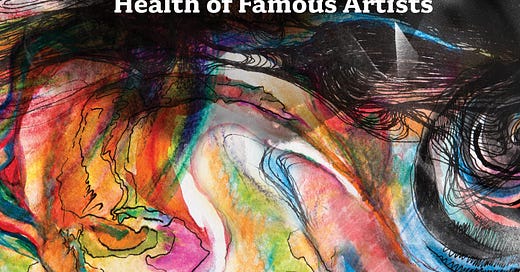



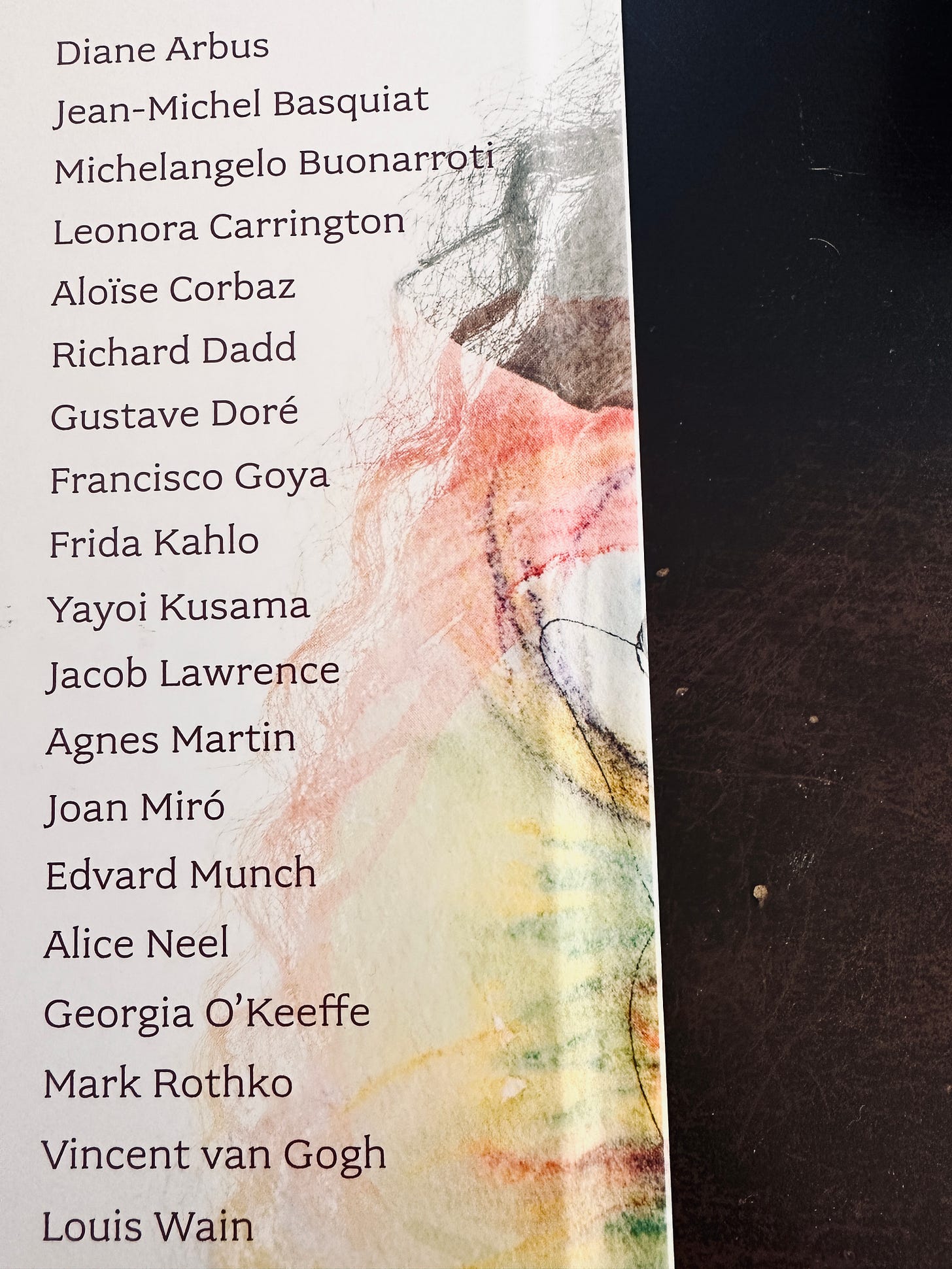

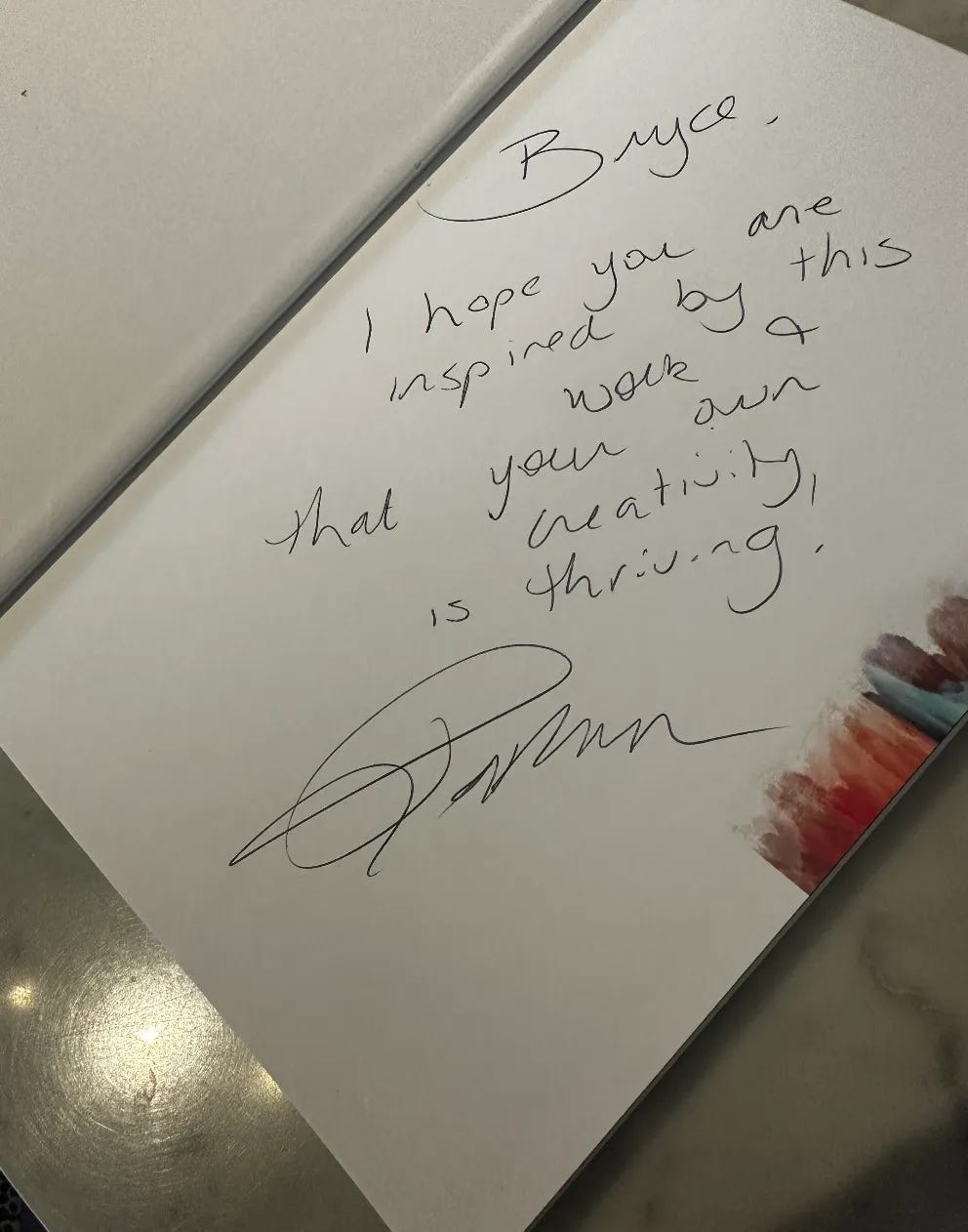
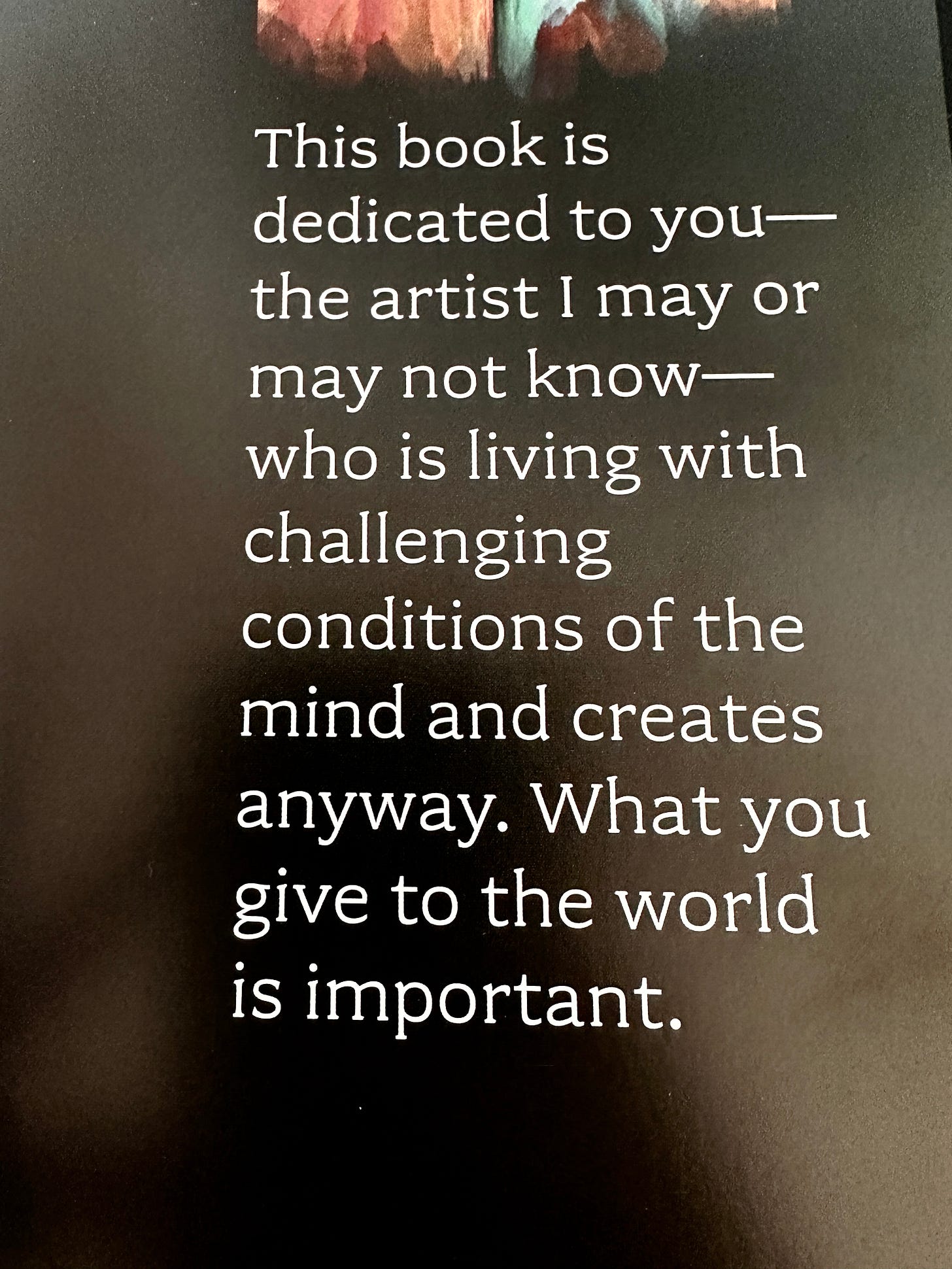

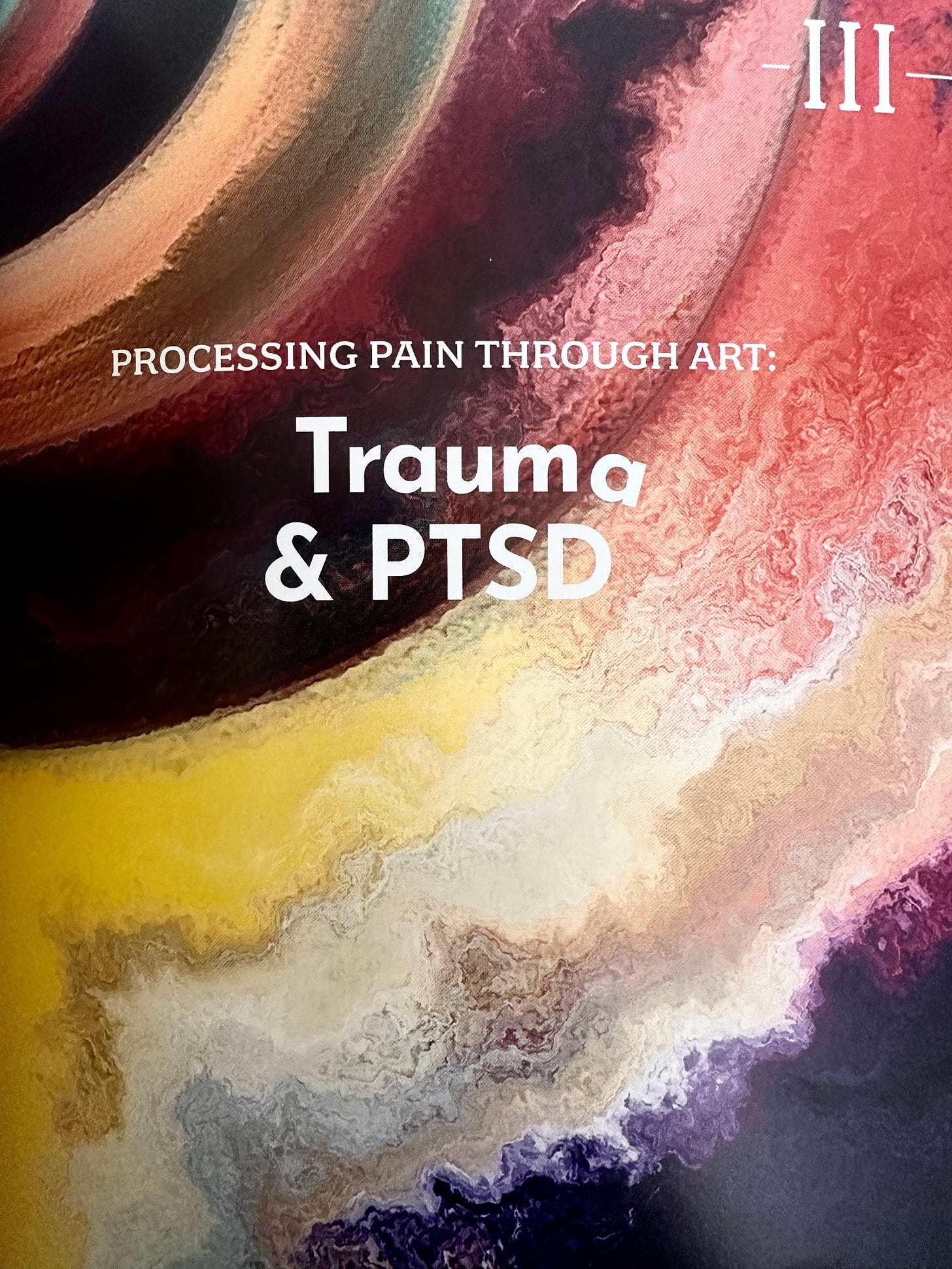

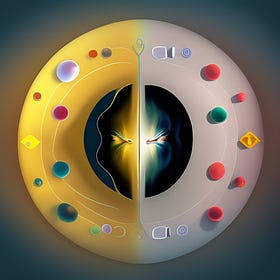


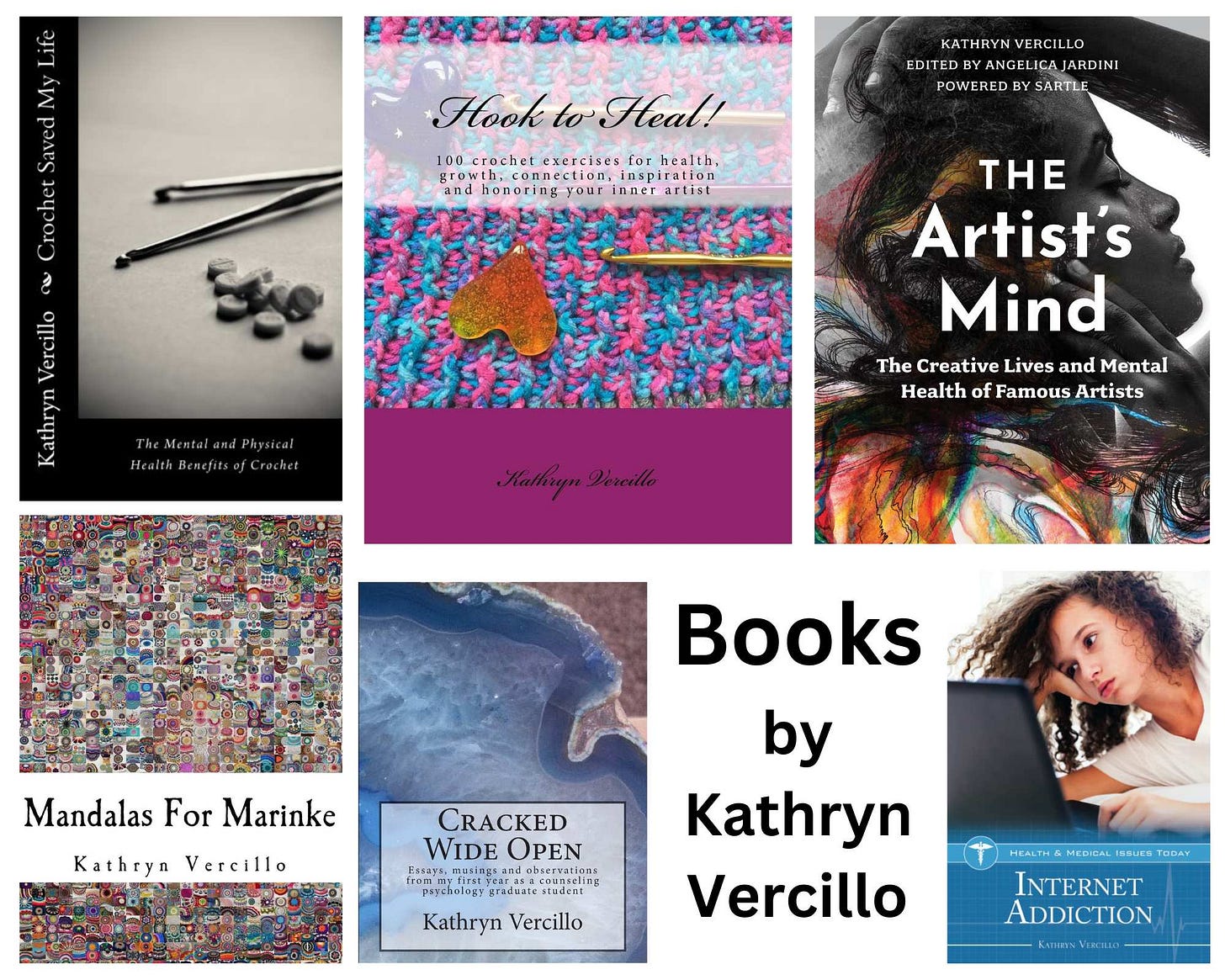
Congratulations to you again Kathryn!!!! I was delighted to discuss this topic and be a part of the fun around your wonderful book!!! Thanks for sharing!!! 💚
Congratulations once again, Kathryn! This is such a handy round-up post: saving it so I can read some of the pieces at leisure. It was so glad to be a part of this discussion!